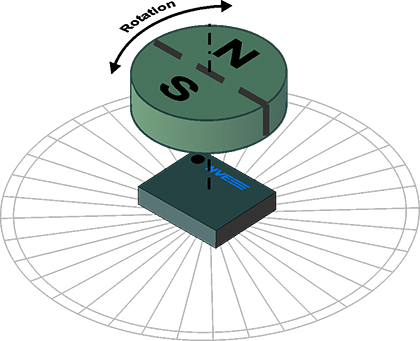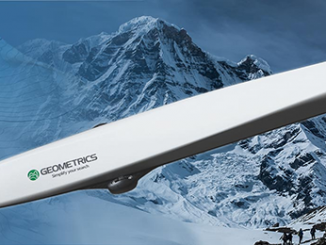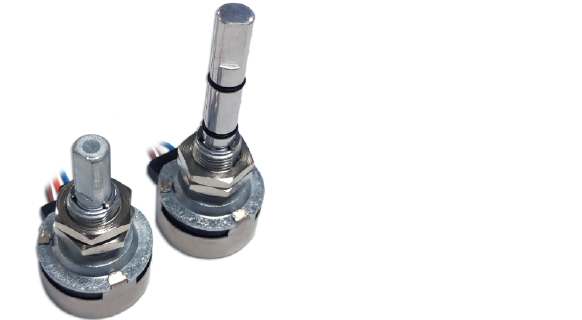By Daniel A. Baker, NVE Corporation
What is a “diametrically-magnetized” magnet?
Diametrically-magnetized magnets have the poles on opposite sides of the magnet diameter, making them perfect for magnetic angle and rotation sensing (see Figure 1).This magnetization direction differs from conventional axially-magnetized disk magnets that have the north pole on one face and the south pole on the other. This orientation is often ideal for proximity sensing.

Wide range of applications
Compared to other technologies, magnetic angle sensors are accurate, noncontact, full 360-degree rotation, low power, and provide absolute (not just relative) position.
Magnetic angle sensing applications include robotics, mechatronics, flow meters, man-machine interfaces such as knobs, automotive applications including cam/crank-shaft position and small motor controls such as power seats.
Magnet materials
Diametrically-magnetized rare-earth magnets, such as neodymium iron boron (NdFeB), are used with semiconductor angle sensors such as Hall-effect sensors. These rare-earth magnets are expensive but have high magnetic energy products for high field strengths and low remanent magnetization temperature coefficients so they are fairly temperature stable.
Ferrite diametrically-magnetized magnets are used in high-volume, low cost applications such as wall clock movements. Ferrites have lower energy products and produce smaller magnetic fields and their strength varies more with temperature, often making them incompatible with legacy sensors. A new generation of magnetic angle sensors, however, has enough operating latitude to work well with these lower cost ferrite magnets.
New TMR Sensors
New spintronic Tunneling Magnetoresistance (TMR) devices produce a large change in resistance in small magnetic fields. Sensors are available in Wheatstone bridge analog versions, and TMR-based “smart sensors” with Serial Peripheral Interfaces (SPI) were recently announced.
TMR sensors are more sensitive and have wider operating field ranges than Hall-effect sensors. They operate with fields as low as 1.5 millitesla (15 oersteds) and are still accurate at much higher fields. This broad field range allows wide mechanical latitude, and compatibility with inexpensive ferrite magnets over a large temperature range despite ferrite’s large loss of strength with temperature.
Popular Magnets
The following table summarizes popular diametrically-magnetized magnets angle sensing depending on size, spacing, temperature stability, and cost requirements:

Additional resources:
A magnetic field calculator application for diametrically-magnetized magnets is available at: www.nve.com/spec/calculators.php
About the Author:

Daniel A. Baker has been president of NVE Corporation, a leader in xMR magnetic sensors, since 2001. He has more than 40 years of industry experience and has a B.S. in engineering from Case Western Reserve University and a Ph.D. in engineering from the University of Minnesota. He can be reached at sensor-apps@nve.com.



